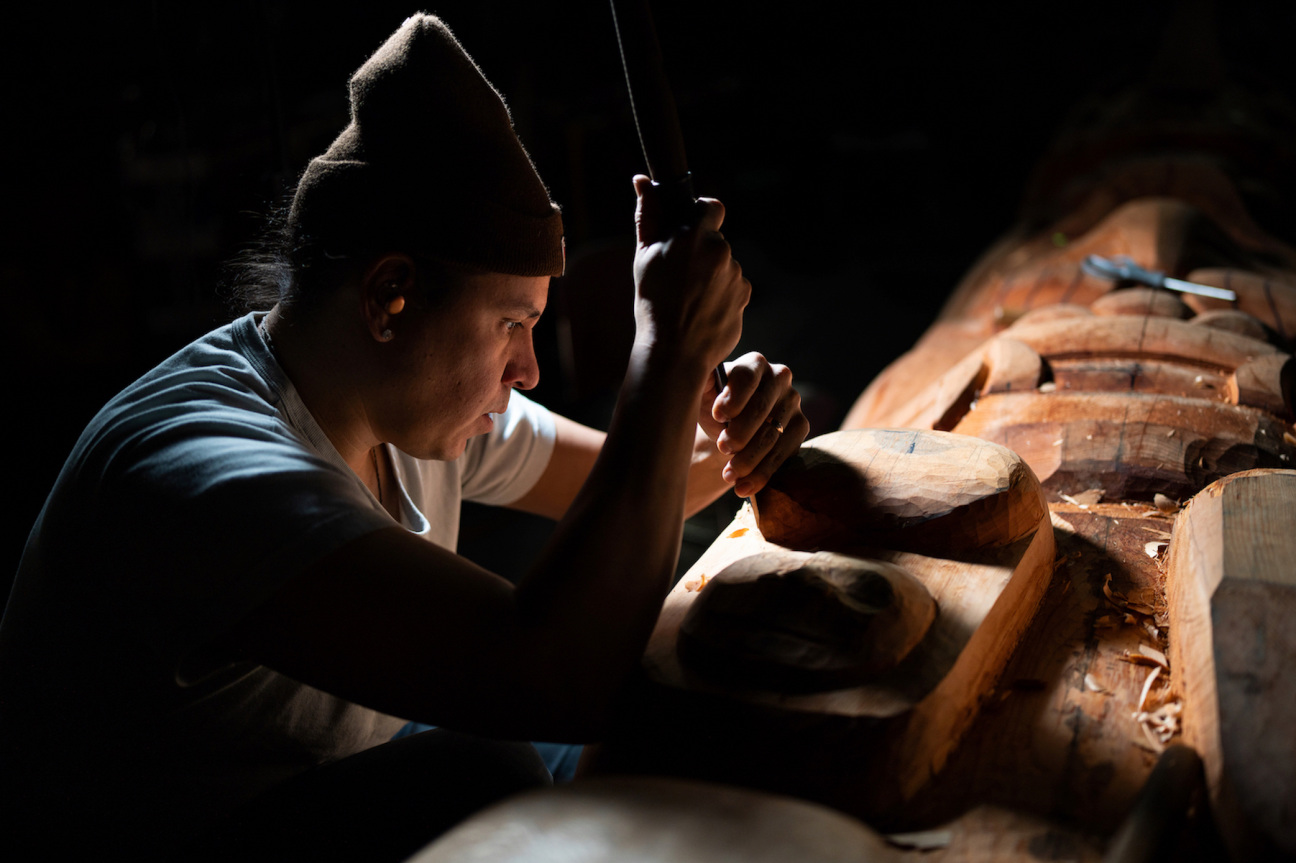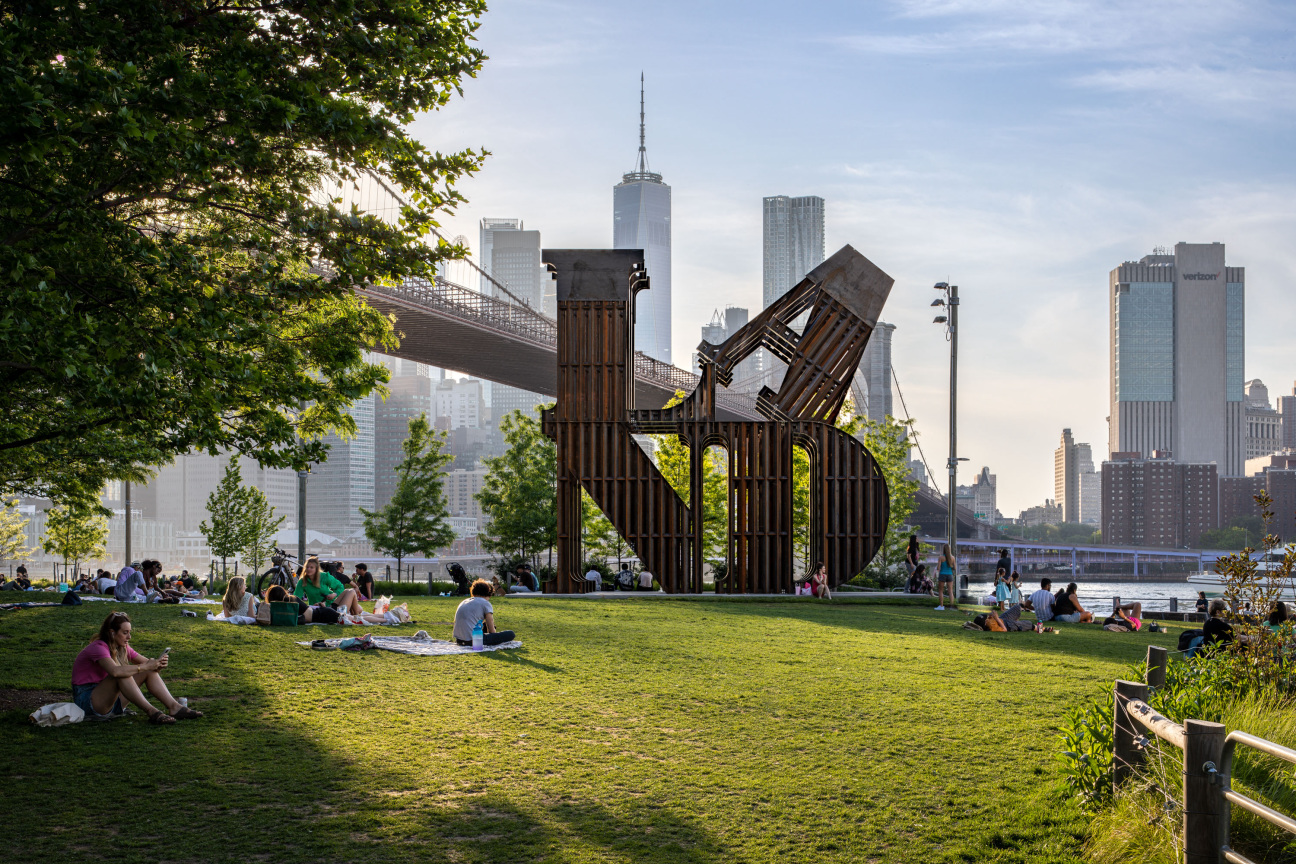
The oft-repeated story behind California’s famous Hollywood sign leaves out some key details. Most people know that it was first erected in 1923 as a real-estate billboard, and that it originally had the word “land” at the end. But few consider that the sign doubled as “an advertisement to sell Indigenous land to white-only real estate owners and developers,” says the artist Nicholas Galanin.
Over the next century, the landmark would become a venerated symbol of not only a Hollywood dream, but also an American one. So it seemed high time for an artist to publicly interrogate it. To point out that, for Indigenous communities, it symbolizes not arrival and opportunity, but their opposites: removal and violence.

This is the kind of perspective-shifting Galanin specializes in. Based in Alaska, the Tlingit and Unangax̂ artist has spent the past two decades creating increasingly ambitious, multidisciplinary art that asks viewers to think critically about the land on which they stand. His latest work, currently on view in New York's Brooklyn Bridge Park, spells out that word—"LAND"—using material that would have otherwise gone toward the construction of the U.S.-Mexican border wall.
The sculpture, presented by the Public Art Fund, is as difficult to ignore as the one he made in response to the Hollywood sign for the 2021 edition of Desert X, a public art show in the greater Palm Springs area. In recognizable, 44-foot-tall, white block letters, Galanin spelled out "Indian Land.” He installed the piece, titled Never Forget, on the sacred land of the Cahuilla Tribe. For the artist, the words are both a factual description and a statement of intention. The most important element of the work, he says, is “the ask for communities to return legal title of land back to Indigenous care.”

Galanin’s Brooklyn Bridge Park intervention came out of a similar process: “looking at land, and looking at tying it into the violence required to maintain and create colonial nations.” The piece is in the style of Robert Indiana’s famous LOVE sculpture, 50 editions of which have been installed worldwide. Like he did with Never Forget, Galanin is pointing out how marginalized communities likely relate to the original work differently. Love—just like land—is considered by many as universal, but it’s actually not.
The official title of the piece, In every language there is Land / En cada lengua hay una Tierra, includes both English and Spanish, referencing the two colonial languages that are “pushed upon Indigenous communities to force assimilation,” says Galanin. Undoing that assimilation is a large part of his political, personal, and artistic mission.

For a recent video piece in the Liverpool Biennial, Galanin spoke to his son in the Tlingit language—one that he’s still learning himself. The community projects he is involved with, like Sealaska—a nonprofit working to enhance the Tlingit, Haida, and Tsimshian cultures of Southeast Alaska—are what he calls his “life work.”
In 1962, an Alaskan village was burned down to make way for the development of a new waterfront in Douglas, near Juneau. Galanin calls the recent installation of a traditional Kaagwaantaan totem pole on that land “a healing project.”

Galanin doesn’t subscribe to the idea that traditional and contemporary Indigenous art can’t mix. “He has trained apprentices to ensure the survival of Northwest Coast art,” says Rosita Worl, president of Sealaska Heritage Institute. “His art is grounded in Tlingit culture.” He sees his practice as his “form of resistance” against the dilution of that culture going forward. This engagement will be honored by an upcoming solo exhibition at Site Santa Fe, using his sculpture, video, and installation work to speak on how Indigenous communities continue to grapple with colonialist practices, as well as with a show at the Baltimore Museum of Art. And he’s not the only one in the art world shifting the conversation.
Jeffrey Gibson's selection to represent the United States in the Venice Biennale—the first Indigenous artist to do so in a solo presentation—was heartening news for Galanin. But when he hears about the move by many museums of late to appoint curators of Indigenous art, or how pieces of Indigenous work (including his own) have been newly added to contemporary museum collections, their announcements as “firsts” come along with some feelings of disappointment.
“Some people might feel like that's a celebration,” he says. “I just think it's unfortunate that it's a first.”










 in your life?
in your life?

